TOKYO — Oct. 28, 2025. Japan’s new prime minister, Sanae Takaichi, meets U.S. President Donald Trump in Tokyo today for her first bilateral summit since taking office on Oct. 21. Expect hard power, hard numbers, and careful flattery: Tokyo wants to lock in U.S. security guarantees and supply-chain deals; Washington wants faster Japanese rearmament and more purchases of U.S. goods.
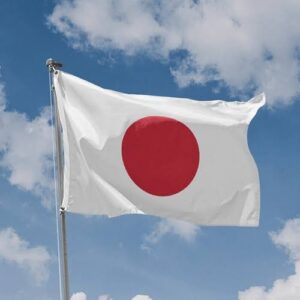
Why this matters now
New leader, new tone. Takaichi is Japan’s first female prime minister and a conservative protégé of the late Shinzo Abe. She comes in vowing to accelerate Japan’s defense build-up and to usher in a “new golden age” in the alliance.
A busy Trump Asia tour. Trump’s Tokyo stop includes a carrier deck appearance at Yokosuka and ceremonies that underscore alliance optics before a contentious meeting with China’s Xi later this week.

What’s on the table
Critical minerals & industrial security. The two sides are advancing a rare-earths/critical minerals cooperation framework aimed at lessening dependence on China. Japan wants stable inputs for EVs, batteries, and defense; the U.S. wants allied capacity on mining and processing. Tokyo is also talking up nuclear and advanced manufacturing tie-ups.
Defense spending and burden-sharing. Takaichi has signaled she’ll hit 2% of GDP for defense as early as FY2025—two years ahead of the previous 2027 target. Trump world is pressing for “more, faster,” plus higher Japanese offsets for U.S. forces. Reality check: anything beyond 2% will be politically and fiscally difficult.
Operational integration. The U.S. is upgrading command arrangements in Japan; both sides want quicker decision-making and deeper joint maintenance, missiles, and ISR cooperation. Expect commitments to practical milestones rather than grand new treaties.
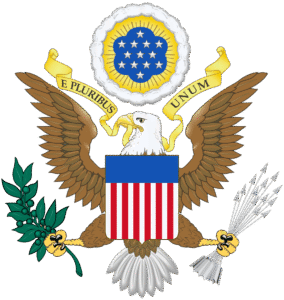
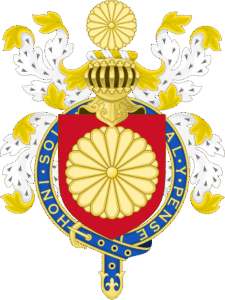
The numbers to watch
~53,000 U.S. troops are stationed in Japan—America’s largest overseas presence—anchored in Okinawa and across Honshu. Their posture (and cost-sharing) will be central to talks.
Defense outlays: Japan lifted the long-standing 1% cap after Russia’s 2022 invasion of Ukraine; 2% of GDP would push Japan into the world’s top three defense spenders.
The politics underneath
Takaichi’s mandate is brittle. She won the LDP leadership after Shigeru Ishiba’s resignation and was designated PM on Oct. 21. Her cabinet relies on a fragile coalition and faces near-term economic headwinds—hence the rush to bank early wins with Washington.

Trump’s ask vs. Japan’s limits. Trump’s team is leaning on Tokyo for bigger checks (defense and purchases) and faster timelines. Tokyo will emphasize capability over headline ratios and insist decisions remain sovereign.
What both sides are saying (and why it matters)
Trump has lauded Takaichi as a “great” leader and cast the U.S.–Japan bond as an alliance at its strongest level—language meant to calm nerves in Tokyo and markets beyond.
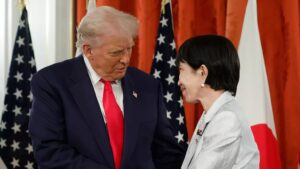
Takaichi is mirroring Abe’s personal-diplomacy playbook—symbolic gifts, deferential optics, and economic sweeteners—to keep Trump engaged while she accelerates Japan’s defense overhaul at home. She’s even floated a Nobel Peace Prize nod for Trump—purely political theater, but useful theater.
Historical context, in one glance
Abe–Trump, then Kishida–Biden, now Takaichi–Trump. Abe built rapport that paid off in trade carve-outs and steady security ties. Kishida deepened tech/defense integration with Biden. Takaichi is trying to blend Abe-style personal diplomacy with Biden-era structural upgrades—under a president who prizes transactional wins.
Risks and red flags
China retaliation. Explicit rare-earths alignment invites counter-measures from Beijing, from export controls to regulatory harassment of Japanese firms in China.
Domestic blowback. Faster defense spending and any new host-nation support bill will face resistance in the Diet and from prefectures bearing base burdens—especially Okinawa.
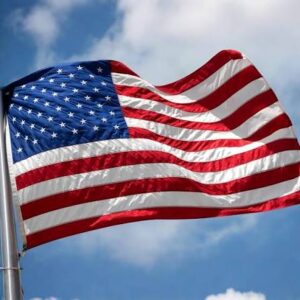
Alliance optics vs. deliverables. A lavish photo-op without concrete implementation timelines would raise doubts about staying power once the tour moves on.
What to look for after the handshake
Joint statement specifics: dates and dollar amounts for minerals, nuclear cooperation, and joint production/maintenance lines.
Command upgrade details: whether Tokyo and Washington set a timetable for the new “war-fighting” HQ functions and integrated fires.

A real defense budget path: supplementary budgets or tax outlines that show how Tokyo pays for 2% in FY2025 without derailing growth.
Summary
Takaichi’s first summit is designed to signal resolve—on defense, on China, and on industrial security. If she leaves this meeting with dated milestones for minerals and defense integration—and avoids open-ended spending pledges she can’t pass at home—she’ll have turned a risky debut into a credible strategic reset.
Dr. G. Fraser. MFR
Headlinenews.news Special report.




